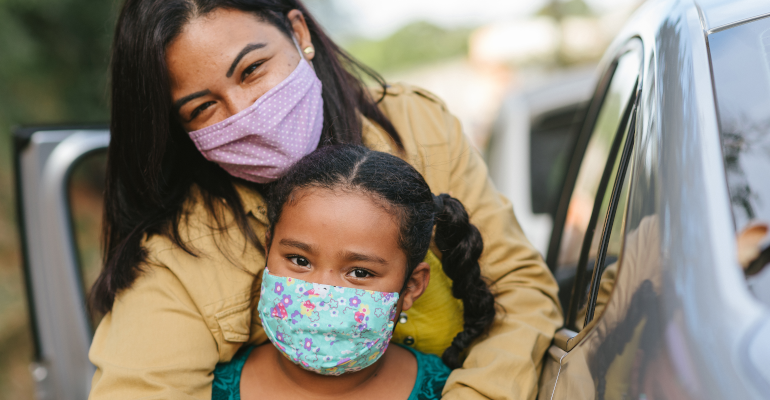Many kids with learning challenges like dyslexia, ADHD and autism are going to need extra support transitioning back to in-person learning this fall, after a stressful year of remote learning ill-suited to their needs. Parents, teachers and community partners like The Shadow Project are working hard to provide this support. The Shadow Project partners with K-8 schools to implement proven programs into the classroom that help kids build skills in goal-setting, self-regulation and reading.
We hope these ideas are useful, and foster confidence and wellbeing for both you and your child. Check out our Family Resources page for more, and contact us at info@shadow-project.org if you have any questions or feedback.
6 Ways to Support Your Child with Learning Challenges this Back to School Season
1. Recognize and Respond to Their Anxiety
Kids with learning and thinking differences are twice as likely to have school-based anxiety due to the pandemic, according to this study from Understood, a national nonprofit that supports those who learn and think differently. Learning to recognize and respond to anxiety will be especially important for parents and teachers this fall. Understood offers lots of helpful information about anxiety specific to children with dyslexia, ADHD and sensory processing challenges.
For a deeper dive, watch this recorded webinar How to Help Students with ADHD Re-Acclimate to In-Person School and Friends from ADDitude Magazine. Caroline Maguire, social-emotional skills expert, shares signs of anxiety and social overwhelm, social strategies, how to get comfortable with in-person events, and more.
2. Write a Letter to Their Teacher
The Shadow Project recently interviewed Clarice Jackson, founder of Decoding Dyslexia Nebraska and Voice Advocacy Center, who shared this strategy. A “welcome to having my child in your classroom” letter can include your child’s story, signs and symptoms of their learning challenge, accommodations they need, and tools for that particular challenge. A letter like this opens up communication between you, your child and their teacher, and prompts the teacher to connect with your child as a whole human being.
3. Help Them Create an Emotional Regulation Plan
The Center for Cognitive Diversity developed My Emotional Regulation Plan, a survey that asks kids to identify their triggers, signs of stress, and ways to respond. Originally developed for distance learning, we think it’s still a great tool for in-person school. You can give the completed survey to your child’s teacher (along with the letter from tip #2), or review it with your child so they know how to respond to their own needs as they transition back to the classroom.
Many schools are developing sensory spaces, wellness rooms, or calming corners to help students manage their stress. These spaces allow students to use tools like fidgets, noise-reducing headphones, and stretch bands to practice emotional regulation, so they can get back to learning. The Shadow Project partners with schools to install sensory spaces and train school staff and families on how to meet students’ sensory needs.
4. Empower Them to Build Resiliency
From Healthy Children, powered by pediatricians, Building Resilience in Children goes through the seven C’s of resilience. You can work with your child on building each aspect of resiliency, to help them recognize their abilities and strengths that will help them get back to learning in the classroom and beyond.
5. Promote a Healthy Relationship with Screens
Experts share ideas on NPR for working with your child to build healthy boundaries with screens, as their necessity for school and learning continues to evolve. Our biggest takeaway: really listen to kids’ needs and online experiences, and use that to promote buy-in for rules. The Shadow Project also has a recorded webinar presented by a parenting coach, Fostering Healthy Rhythms IRL: Strategies to Reduce Unhealthy Dependence on Screen Time.
6. Model Self-Care
In this podcast episode Finding Joy in Parenting Kids with ADHD, Penny Williams, founder of Parenting ADHD and Autism, talks about parenting with intention and cultivating joy amidst the stresses of life. We all experience stress, and sometimes we overlook our needs because we are caring for others. Taking care of yourself is important, and many kids learn self-regulation by seeing others practice it. This resource, Building a Caregiver Self-Regulation Plan, can help you develop a plan to manage your own stress and it’s a great opportunity to model self-care for your child.


Comments are closed.